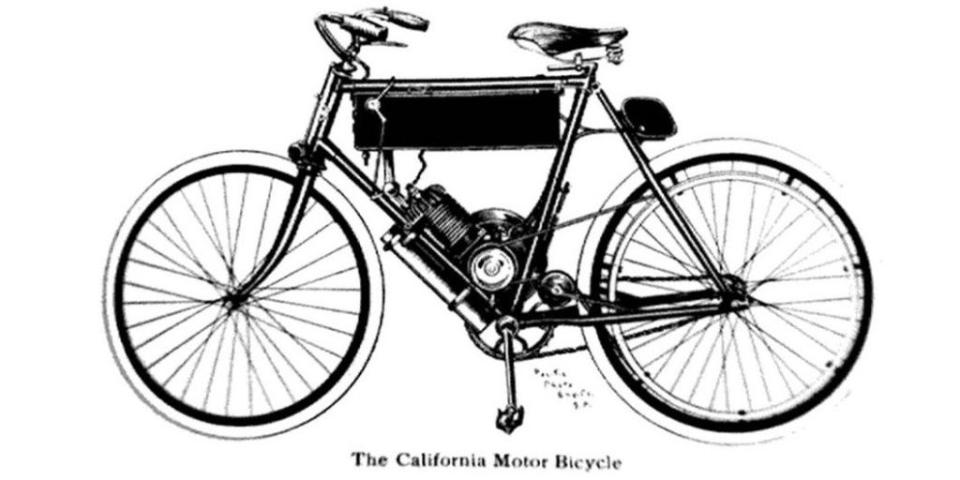The First Motor Vehicle To Cross America May Have Been Found Again

In 1903, at 2:30 in the afternoon of May 16, bicycle racer George A. Wyman left Lotta's Fountain in San Francisco atop a California Motor Company motor-bicycle. Nearly two months later, he arrived in New York City, the first man to ever cross America with a motorized vehicle.
After 51 days, Wyman became a lesser Charles Lindbergh, achieving a crossing never before attempted. But soon after the trip, his motorcycle disappeared: somewhere in San Francisco, maybe hanging from a bar, maybe lost in the 1906 earthquake. Wyman himself didn't know. Now, the George A. Wyman Memorial Project may have found it.
Wyman kept a diary throughout the journey, and it can be found here. It reads like a Steinbeckian retelling of The Iliad, a trial by fire across the North American continent. Wyman traveled light, carrying a Kodak camera, a small set of clothes, and a Smith & Wesson .38 revolver. Decades before asphalt crisscrossed the country, he spent most of his time riding atop railroad tracks. (Imagine the butt-numbing bumpiness.) He faced snow in the Sierra Nevadas. He raised the ire of shepherds, whose sheep scattered at the sound of his motorcycle. He got 120 miles per gallon, but he still had to find oil and gasoline. An excellent mechanic, he improvised repairs nearly the entire way across. In Wyoming, a rancher pulled him out of the mud with a team of horses. The crankshaft broke outside Aurora, Illinois, and he pedaled to Chicago and spent five days in the city's seedy underbelly waiting for a replacement to arrive by train. In Albany, his engine finally gave up the ghost; he pedaled the remaining 150 miles to New York City. After the trip, he and the bike returned to San Francisco. This time, by train.
Twenty days later, Horatio Nelson Jackson, Sewall Crocker, and a pitbull named Bud crossed the country in a Winton automobile, and blew Wyman's achievement into the weeds.

In the Seventies, Los Angeles Times publisher Otis Chandler purchased what he thought was the 1902 machine, as convinced by its owner. For decades, the only proof that it was Wyman's was Chandler's word. He restored it from its terrible shape, and put it on display in his museum in Oxnard, now the Mullin Automotive Museum. When he passed away in 2006, a new owner reached out to the Wyman Memorial Project. One can imagine how eager both parties are to have the machine authenticated. Wyman made many modifications to the Regular Model, and underneath the restoration, if there's any evidence to such, then it could all be real.
So who knows? It could be Wyman's bike, it could not-but it's the finest 1902 California Regular Model in existence. That alone is worth some merit, and money. And if it is the first motorized vehicle to cross from sea to shining sea, says the Wyman Project, it would be "a national treasure of the first order." Atlas Obscura has the full story, as well as the Wyman Project's website.
Images via the Wyman Memorial Project, go-faster.com

 Yahoo Autos
Yahoo Autos 